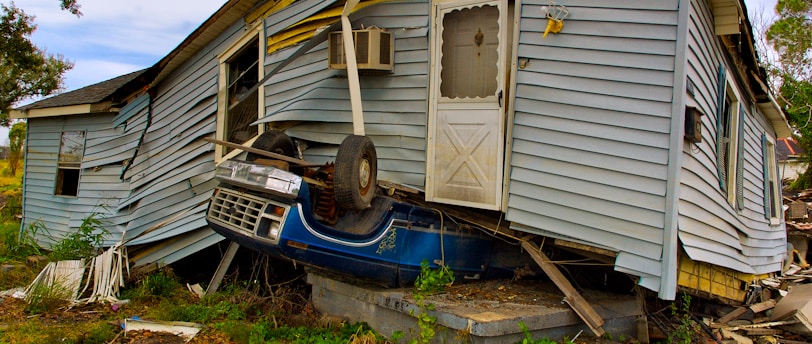Buyer risk and pre-settlement inspection
Learn about the consequences of property damage occurring after entering into a contract. Understand the legal implications and how it can affect your rights and obligations. Stay informed and protected.
BRISBANE LAWYERSJOINT TENANCYCONVEYANCINGPROPERTY INSPECTION
3/18/20243 min read


The time between signing a Contract of sale and officially becoming the owner of a property is called a settlement period.
During this time the conveyancing process takes place, meaning all of the legal and financial elements involved with buying and selling a property are finalised so that ownership can be legally transferred, and funds are allocated to each party accordingly.
In Queensland, a typical settlement period is four to six weeks which means that, although unlikely, there is time for substantial damage to occur to a property after the Contract of sale is signed.
When Does The Buyer Begin Bearing The Risk For The Property?
In Queensland, Australia, the buyer begins bearing the risk for the property from 5:00 pm on the first business day after the Contract date. This means that, from this point onwards, the property all but legally belongs to the buyer and they will bear any risk associated with the property.
However, it’s important to note that contracts of sale in Queensland also provide that sellers must not do anything to the property during settlement which would result in the buyer being out of pocket. If any damage occurs to the property (with the exception of fair wear and tear), the seller is liable until settlement is finalised.
When Should A Buyer Conduct A Pre-Settlement Inspection?
Buyers are advised to conduct their pre-settlement inspection as close as possible to the settlement date. Ideally, it will occur the afternoon of the day before settlement but should take place no later than the morning of the settlement date. This provides enough time to raise a concern but should remain too short a time period for new defects to arise.
Here’s what buyers should look out for during a pre-settlement inspection.
Repairs Agreed Upon: Verify that any repairs specified in the contract of sale have been satisfactorily completed.
Plumbing and Electrical: Check all taps, drains, switches, and appliances to ensure they are functioning properly.
Removal of Rubbish: Confirm that all rubbish, junk, and furniture have been removed from the property.
Property Condition: The property should be in the same condition as when you signed the contract. Nothing that was meant to be staying in or attached to the property should have been removed.
Damage to the Property: Look out for any new damage to the property. If the property is in a worse condition than when contracts were exchanged – for example, if there’s a new hole in the wall, broken window or burst water pipe – you can ask the vendor to make repairs accordingly.
Buyers should take detailed photos and/or videos of any new damage they have found.
On the other hand, the buyer should confirm that any items or fixtures that are supposed to be left at the property as outlined in the contract (such as light fittings or cabinetry) have not been removed.
Remember, the pre-settlement inspection is a crucial step in the buying process. It’s best to do this inspection close to when keys are handed over but with enough time (at least a few days) to allow for repairs, if necessary. It’s advisable to coordinate with your solicitor or conveyancer to determine the most suitable time for your pre-settlement inspection.
What Should A Buyer Do If They Find Their Property In An Unsatisfactory Condition During A Pre-Settlement Inspection?
All issues should be rectified prior to settlement, so if a buyer is not satisfied with the condition of the property at the pre-settlement inspection, it is crucial that they immediately advise their lawyer or conveyancer.
Document the Issues: Take detailed photos and/or videos of any new damage or issues.
Notify Your Real Estate Agent or Conveyancer: If one or more issues are identified, you should notify your real estate agent or conveyancer. They will communicate with the vendor to discuss repairs or other resolutions before settlement.
Request Repairs or Compensation: If you discover anything that is broken or not in the same condition as it previously was, fixing the issue may be as simple as asking the seller to attend to it, or pay you an agreed amount of compensation.
Organise a Second Inspection: You are then entitled to organise a second inspection to check that the issue has been dealt with.
Remember, if the property is not in its agreed-upon condition, there is an expectation that it should be fixed prior to final payment being made. In this situation, it’s up to the vendor to remedy the problems.
Please consult with a legal professional for advice tailored to your specific circumstances. This information is general in nature and may not apply to all situations.
If you are unsure about the conveyancing process in Queensland, speak to Charter Conveyancing today.
